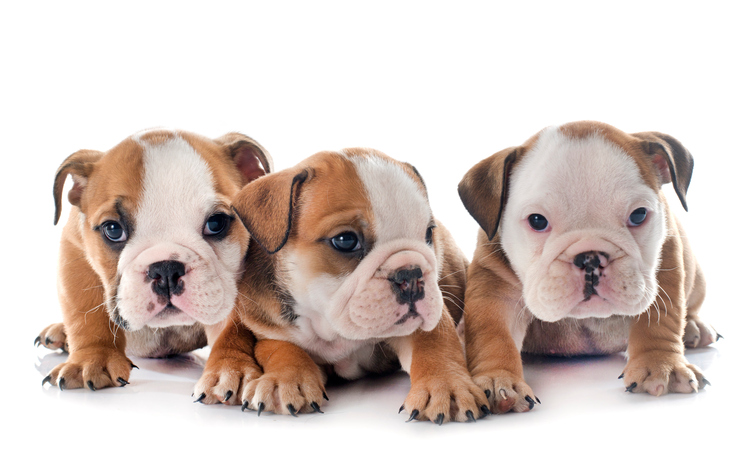Who’s a good blog entry full of facts about puppies and dogs? These are! Yes they are!
Puppies at Birth
Puppies are born without teeth, sight, and hearing. (Those come at about two weeks old.) Nor can they regulate body temperature or know how to expel body waste. The first sense they develop is touch, which explains why puppies love to cuddle both other dogs and humans. Puppies open their not-quite-fully-formed eyes on around day 10 of their life. All puppies have blue-gray eyes when they’re born, but it changes into the permanent color (usually brown) at around 10 weeks.
Sleeping and Eating
In its first week of life, a puppy sends a total of 22 hours sleeping, on average. The other two hours are primarily spent feeding.
Teeth
While humans will grow 20 “baby teeth” and 32 “adult teeth,” dogs have way more. A puppy will grow 28 lil’ chompers, which will give way to 42 fully-grown dog teeth.
Weight
By about five months old, a puppy reaches half of their fully mature weight. (They pack on the rest by their first birthday.)
Puppies Names
No need to give them a long or interesting name. They only listen to and ultimately recognize the first syllable of the word by which you’ve chosen to address them.
Learning the Rules
They learn how to obey humans very quickly. A 2007 study showed that puppies as young as six weeks old understood that a person pointing their finger at a cup meant that there was food in that cup.
Why are They So Cute?
What’s the science behind why us people think puppies are so cute? It’s due to a concept called baby schema. Puppies share certain features with baby humans that subliminally, and on a deep-seated level, make us like them. Those traits include big eyes, heads too big for their often chubby bodies, and their soft skin (or hair).
Whelp (aka Puppy)
Kitten, the diminutive form of cat, is an obvious evolution. But how did “puppy” come to mean “young dog”? In the 15th century, the French word poupée meant “toy” or “doll.” By the late 16th century, the name for a cute fake thing came to be associated with a real fake thing—young dogs. (Before that, the most common English-language word for a newborn dog was “whelp.”)
Miacis
If puppies are young dogs, then the most puppyish of all dogs would be the first ancestor of today’s dogs. That would be the Miacis, a creature that lived about 40 million years ago. It resembles a weasel, and it’s the common ancestor of not just all dogs, but wolves, raccoons, and even bears.









